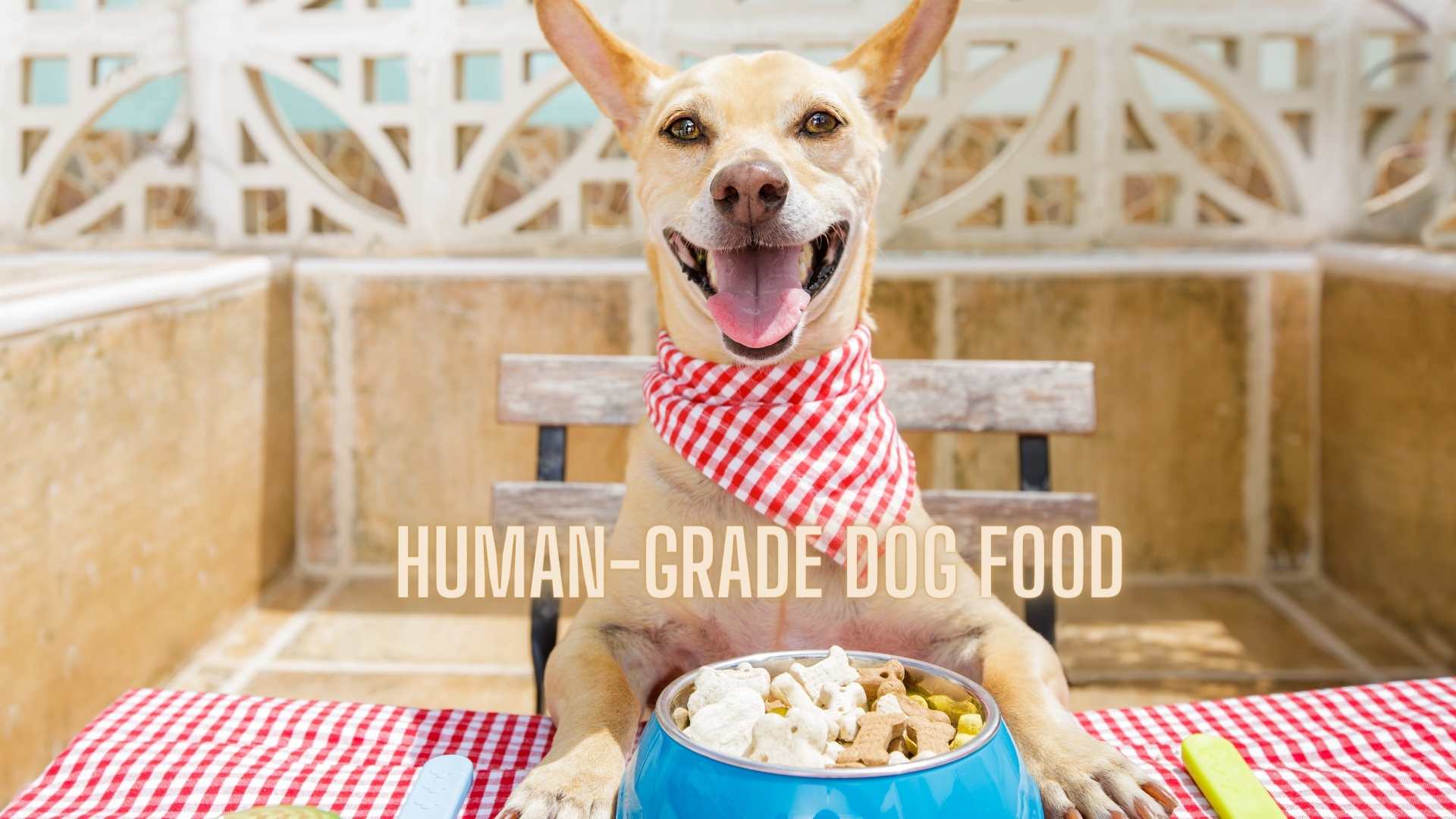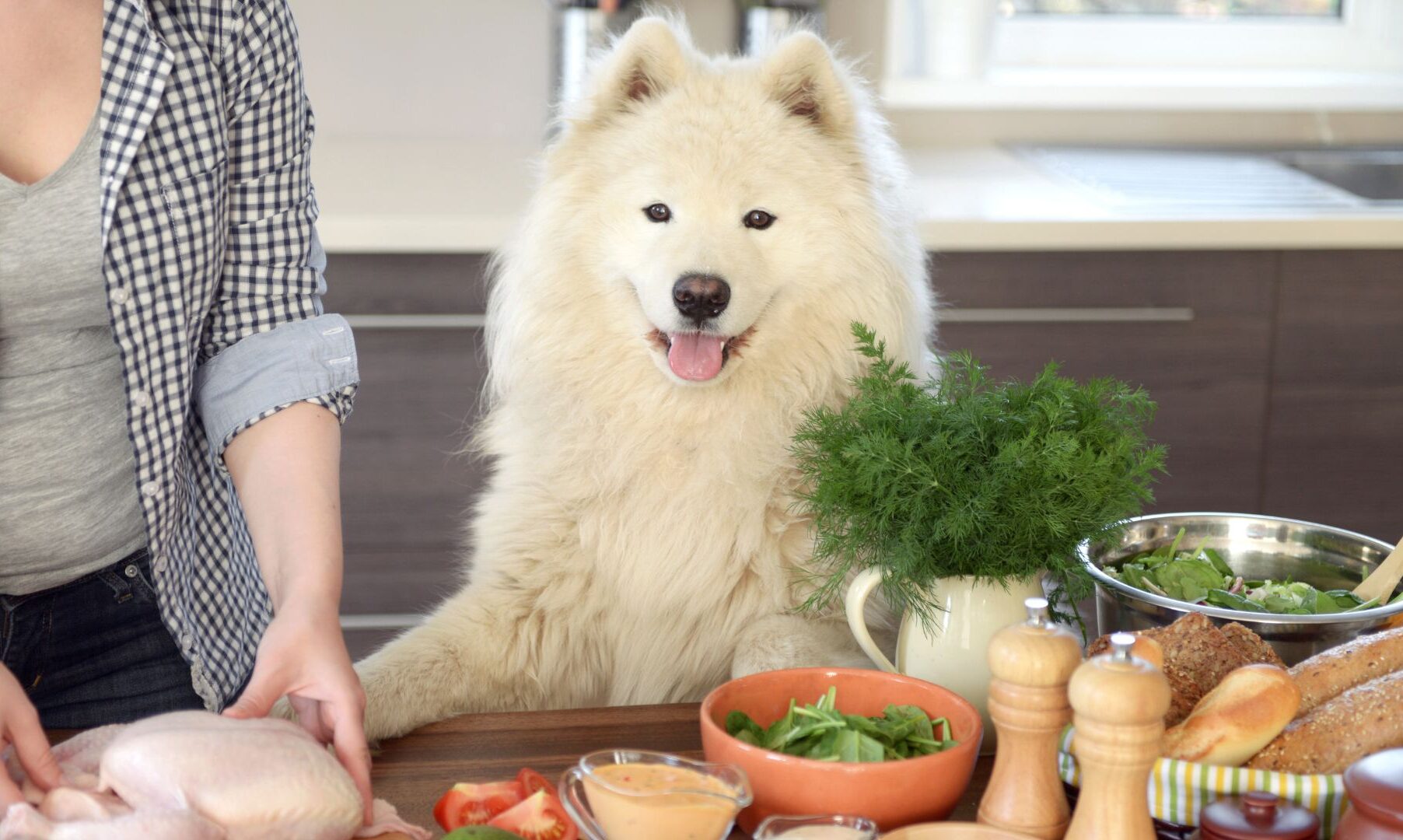The term “human-grade dog food” has garnered much attention lately, but what does it truly mean? In essence, human-grade dog food refers to pet food that is made from ingredients safe enough for human consumption and prepared in facilities that meet the same rigorous standards as those required for human food. This sets it apart from conventional feed-grade dog food, which typically lacks these stringent regulations.
The idea behind this trend is to offer dogs higher-quality, more nutritious meals free from harmful fillers and additives. But, is it really worth the buzz, or is it just another marketing tactic?
Let’s explore why this topic is important, delve into the science behind human-quality pet food, and answer some common questions about its benefits and drawbacks.
Why is Human-Standard Dog Nutrition Important?
Pet owners are becoming more conscious of what they feed their dogs, much like they are with their own diets. For dogs with food sensitivities, digestive issues, or allergies, human-grade dog food offers a safer and potentially healthier alternative to traditional feed-grade options.
Many pet parents choose these foods because they trust the safety and transparency in ingredients, avoiding the risk of harmful fillers and chemicals commonly found in lower-grade dog foods. Moreover, opting for high-quality, minimally processed ingredients can lead to improved digestion, healthier skin, and an overall better quality of life for your pet.

Comprehensive Breakdown of Human-Grade Dog Food
When it comes to dog food, the term human-grade is a significant distinction from the more common feed-grade food. Human-grade dog food represents a higher standard in ingredient quality, production practices, and nutritional considerations. Let’s break down these elements in more detail:
Ingredient Quality
Human-grade dog food utilizes ingredients that are safe for human consumption. This means every component, from meats and vegetables to grains, must meet the same safety and quality standards required for human food. The main benefit here is the use of real, whole-food ingredients rather than fillers, by-products, or artificial additives commonly found in feed-grade dog food.
Human-edible dog foods often include high-quality proteins such as chicken, beef, or turkey and carbohydrates from sources like brown rice, oats, or sweet potatoes. These ingredients are nutrient-dense and often more digestible for dogs compared to processed alternatives used in standard kibble. This can be particularly beneficial for dogs with allergies, sensitivities, or specific dietary needs, as these foods are typically free from low-grade fillers and harmful chemicals.
Manufacturing Standards
The production of human-grade dog food takes place in facilities that meet the rigorous standards set by the USDA or equivalent authorities. These facilities are inspected during the production process to ensure that the environment, equipment, and handling procedures are all aligned with human food safety guidelines.
This differs from feed-grade dog food, where facilities are inspected, but the production process is often less closely monitored. In human-grade manufacturing, not only are the ingredients carefully selected, but the cooking and handling procedures also follow strict safety protocols. This minimizes the risk of contamination and ensures that the food retains its nutritional integrity.
Processing Techniques
Human-grade dog food typically undergoes minimal processing, helping to preserve the natural nutrients found in the ingredients. Traditional dog food, especially kibble, is often subjected to high-heat extrusion processes that degrade the nutritional quality of proteins, vitamins, and other essential nutrients. In contrast, human-grade dog food tends to be lightly cooked or even served raw in some cases, maintaining more of its original nutrient content.
This difference in processing translates to better digestibility. Studies have shown that dogs digest human-grade dog food more efficiently, leading to improved nutrient absorption and smaller, more consistent stools. The fresher, whole-food ingredients are also easier for dogs to process, which may lead to fewer gastrointestinal issues and a more balanced gut microbiome.
Nutritional Balance
While human-grade dog food is made from high-quality ingredients, what truly matters is whether the food is nutritionally balanced. Reputable brands ensure that their human-grade foods meet or exceed the standards set by the Association of American Feed Control Officials (AAFCO). This ensures that the food provides all the essential nutrients your dog needs, including proteins, fats, vitamins, and minerals.
It’s important to understand that just because food is human-grade doesn’t automatically make it ideal for dogs. Some ingredients that are safe for humans may not be suitable for dogs. Therefore, the best human-grade dog food will still prioritize balanced nutrition tailored to a dog’s dietary requirements. For instance, AAFCO ensures that all dog foods meet the minimum nutritional needs for different life stages, from puppies to seniors.

Shelf Life and Preservatives
Another consideration when comparing human-grade dog food with conventional dog food is its shelf life. Since human-grade dog food often lacks the artificial preservatives found in traditional dog food, its shelf life may be shorter. However, some brands employ natural preservation techniques, such as vacuum sealing or freezing, to extend the shelf life without sacrificing nutritional quality.
For owners looking for convenience, some human-grade dog foods are available in freeze-dried or frozen formats. These options maintain the quality of the food while making storage and meal prep easier. Unlike processed kibble, which can sit on shelves for months, human-grade dog food requires careful storage to retain its freshness and prevent spoilage.
Cost and Accessibility
Human-grade dog food is generally more expensive than traditional kibble, and this is primarily due to the higher quality of ingredients and the more rigorous production processes involved. While it can be a worthwhile investment in your dog’s long-term health, it may not be affordable for every pet owner.
Additionally, the availability of human-grade dog food is still relatively limited compared to the vast selection of feed-grade products. Not all pet stores carry these premium options, which means many owners must order them online. However, the market is expanding, with more brands emerging to meet the growing demand for higher-quality, minimally processed dog food.
Health Benefits
The potential health benefits of feeding your dog human-grade food are numerous. Because it uses fresh, whole ingredients, human-grade food may promote better digestion, shinier coats, healthier skin, and more energy. Furthermore, dogs with specific health issues, such as food allergies or sensitivities, may benefit from the transparency of the ingredients and the absence of artificial fillers and additives.
While more long-term research is needed to fully assess the impact of human-grade dog food on a dog’s overall health, initial studies and anecdotal evidence suggest that it can be a viable option for improving the quality of life for many pets.
Navigating the Human-Grade Dog Food Market
Choosing the right human-grade dog food can be challenging. When selecting a brand, look for transparency in ingredient sourcing and avoid products with artificial preservatives or fillers. Certifications like USDA Organic or AAFCO compliance can offer an additional layer of trust. However, it’s important to remember that not all human-grade foods are nutritionally balanced for dogs, so it’s crucial to choose a brand that meets your pet’s dietary needs.
Common FAQs about Human-Grade Dog Food
What is the difference between human-grade and feed-grade dog food?
Human-grade dog food is made from ingredients deemed safe for human consumption and prepared in USDA-inspected facilities. Feed-grade dog food, while safe for dogs, may contain lower-quality ingredients and is produced under less stringent safety regulations.
Can humans eat human-grade dog food?
Technically, yes. Human-grade dog food meets safety standards for human consumption. However, it’s formulated specifically for dogs and lacks seasoning and certain nutrients that humans might require.
Is human-grade dog food healthier for my dog?
While human-grade dog food offers high-quality ingredients and is often less processed, what matters most is whether the food is nutritionally balanced. Always ensure that the food meets the standards set by AAFCO for complete and balanced dog nutrition.
Why is human-grade dog food more expensive?
The higher cost of human-grade dog food is largely due to the quality of ingredients and the manufacturing process. Producing food in USDA-inspected facilities and using whole-food ingredients without artificial additives can drive up production costs.
Conclusion
Human-grade dog food offers a compelling alternative for pet owners looking to provide their dogs with the highest-quality meals. While it may come at a higher price point, the potential health benefits — from improved digestion to better overall well-being — make it an attractive option for many.
As with any dog food, it’s essential to ensure that it meets your dog’s specific nutritional needs, whether you opt for human-grade or traditional feed-grade options.



0 Comments